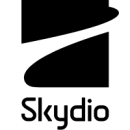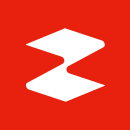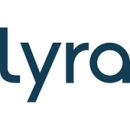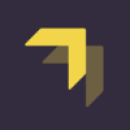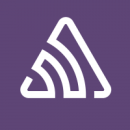
Although there’s been plenty of uncertainty in the job market over the last year, there’s some good news on the horizon: many tech companies not only survived but thrived in 2020, and are growing and looking for new talent to join their ranks.
The following San Francisco companies are just a few of the local organizations hiring right now. From a slew of engineering positions at Handshake to openings across development, marketing and security at Skydio, opportunities abound for jobseekers looking for fresh challenges.
And we’ve got the inside scoop.
Tech professionals from each company shared what gets them out of bed each day, outlining the products they help build that have the potential to impact consumers’ lives, the career development opportunities they’ve experienced and gave us a taste of their company cultures.
What they do: Skydio creates autonomous drones that are used by consumer, enterprise and government customers.
The reason he accepted a job at Skydio: “For me, Skydio really has it all,” Reading said. “First, the product and core technology is incredibly exciting. The autonomous flight capabilities are mind-blowing and arguably years ahead of anything else on the market. Second, the move to bring this technology explicitly to the enterprise segment represents a huge opportunity to increase the impact and reach of Skydio. Given my background in IoT and enterprise SaaS, I get excited about the opportunity and possibilities provided by a connected fleet of drones.
“As drone technology moves more and more to being dominated by software, creating a platform that can seamlessly integrate drone-based data captured with enterprise workflows will accelerate adoption and impact. I am thrilled to have the opportunity to join this incredibly talented team and build out the future of connected drone technology.”
What excites Reading about the future of Skydio: “One of the reasons I came to Skydio was the opportunity to extend Skydio autonomy into the enterprise through a connected platform. There is a wide variety of different technologies and disciplines that must come together to deliver a Skydio product and our team composition reflects this. On the software side, our products require expertise spanning computer vision, machine learning, robotics, wireless, embedded programming, mobile development, back-end data processing and full-stack web development to name a few, and that doesn't include hardware. With so many technologies and such a strong team, this is a great place to learn and have an impact. I am excited about building both the team and the platform that will enable fleets of autonomous drones to be more effective and productive than ever before.”
What they do: Zipline works to democratize access to critical medical supplies through instant drone delivery.
The reason she accepted a job at Zipline: “There are two key things that were on my mind when I accepted the job at Zipline three years go,” Balme said. “One being, I was excited about working at a company that actually had a product in production. There are a lot of companies out there that design cool things, but then take years to polish the design and actually release it. From day one at Zipline there has been a clear focus on getting the product out there into the hands of customers, gathering feedback and having it serve a useful purpose as early as possible. That was a big thing for me.
“The second piece was the company’s commitment to the medical mission. Something that’s really important to me is being able to work on technology that is actually making a difference in people’s lives every day. In my interviews at Zipline, I asked some pretty pointed questions about whether the company would pivot away from delivering medical products in favor of more profitable cargo. It was very clear that the medical mission is the real thing and not just the stepping stone.”
What excites Balme about the future of Zipline: “This might not be super glamorous, but as an engineer, seeing what becomes the limiting factor first as you’re scaling is one of the most fascinating parts of engineering in my opinion. I believe that’s where real engineering wisdom comes from.
“The puzzles that we deal with now, having just passed 100,000 production flights, look nothing like the puzzles we were dealing with back when we hit 1,000 or 10,000 flights. We have to develop testing that exceeds the weirdest and most strenuous situations that we encounter in the field. We have to make sure we collect all the data we need to diagnose puzzles we never anticipated — whether it’s a rare ESD issue or a problem that only manifests when the GPS constellation is just so!
“I’m excited to see what our testing infrastructure for new drone models looks like as we grow from a fleet of 100 drones in the air everyday to 1,000 and beyond.”
What they do: Handshake provides career recruitment services to college students and companies looking to hire them. The staffing company aims to connect students with full and part-time jobs as well as paid and unpaid internship opportunities.
The reason he accepted a job at Handshake: “When I decided to come to Handshake, I was actively looking for exciting opportunities with startups after eight years at a large enterprise. Two things immediately excited me about the company. First, it was evident that the mission was more than just writing on the wall because it was present in every conversation about the company. Second, every person I talked to throughout the process was incredibly sharp. The level of talent and energy surrounding the team was palpable.
“Over the last year and a half, my initial impressions have been validated. As a company, we’ve made world-class accomplishments in the middle of a pandemic, like delivering critical products that were unplanned to our customers and above all, putting our people first. As a salesperson, this company is a dream to be with because of the access and collaboration we have with our product, engineering, marketing and other colleagues throughout the organization.”
What excites Coates about the future of Handshake: “Looking forward, I’m excited about our growth trajectory as a need-to-have technology platform for most companies, our evolution into a strategic business partner for the majority of our customers and above all, furthering our mission. I firmly believe that in the next few years, more college students will begin their careers on Handshake more than any other medium.
“Personally, I’m excited to expand on the trust and partnerships we’ve established with some of the largest and most consequential companies in the world, and to help ensure we are a known entity in their boardrooms as a contributor to their success.”
What they do: Lyra Health aims to transform the way people find and receive mental health care through a combination of technology and human touch.
The reason she accepted a job at Lyra Health: “There were two deciding factors for me,” Munro said. “One was the ability to help tell the stories about why companies from all different sectors — manufacturing, healthcare, tech and energy — are investing in evidence-based mental health care right now. I’ve worked in tech for years and have always had strong benefits, but I know that’s not the norm. Hearing during my interview that Lyra had recently partnered with an agricultural company to make sure their fieldworkers could access mental health care really appealed to my personal values.
“Secondly, I’ve never worked at a company before that I felt took a meaningful approach to creating a truly diverse team, especially with respect to hiring and retaining Black, Indigenous, and people of color employees. I asked everyone I interviewed whether they felt like Lyra’s commitment (stated in our CEO’s open letter and on our diversity and inclusion webpage) was authentic and they all wholeheartedly endorsed it. I was looking for a company that is actively trying to both embody and serve the diversity of the United States and I feel excited that I’ve found it.”
What excites Munro about the future of Lyra Health: “Lyra has so many amazing customers! Companies are never required to do more than checking a box related to mental health care for employees, so many of the HR leaders that have partnered with Lyra have really personal and compelling stories about why they’ve made these investments. In some cases, they couldn’t find a therapist for their own children and wanted to make sure their employees had a better experience. In others, these leaders witnessed how unchecked stress could lead to something much more serious like a workplace suicide and they want to inspire other companies to focus on early preventative care. Some of these stories are being told today on our website and the others are mine to find and amplify!”
What they do: Wing is an on-demand drone delivery service and platforms company.
The reason he's stayed at Wing: “I joined Wing in 2014 when it was still a new project within Google [X],” Lesser said. “What’s kept me engaged for going on seven years is the scale of the mission and making meaningful progress every year. There aren’t very many companies that’ll give you an opportunity to build a new industry from the ground up. Most of the car companies we know today started in the first quarter of the 20th century. I think looking back on this century, we’ll see a similar cluster of drone companies. Being a part of this era of innovation in aviation and autonomy is hugely motivating.
“The other thing that’s kept me at Wing is the amazing progress the team is making every year. When I started, we were doing test flights in a warehouse with a drone anchored to the ceiling. Within a year, we were demonstrating deliveries on a farm with orders coming in over walkie-talkies. A couple years later we were delivering to homes in a suburban cul-de-sac. This last year, we did tens of thousands of deliveries to people on three continents. Each phase felt unique with different challenges to solve and I see a lot more of that kind of dynamism ahead.”
What excites Lesser about the future of Wing: “I’m excited to make drone delivery boring. There’s novelty with drone delivery now, but the hard, long-term problem is how to make the technology a routine part of everyday life. There are a lot of moving pieces required to create an end-to-end drone delivery service. My team focuses on how to take the complex design and engineering that’s at the core of what Wing does and make it accessible to our customers, business partners and drone operators through apps and APIs.
“As an engineering lead, my time is split between trying to focus the incredibly smart people I get to work with on important problems and trying to hire great people so we can do more, faster. This year, I’m excited to work on transitioning from an architecture that assumes drones at a single location will serve a single community to a more scalable approach.”
What they do: Sentry’s proprietary software platform helps developers diagnose, fix and optimize the performance of their code.
The reason for his tenure at Sentry: “When I was looking for my next opportunity, one of the things I was really looking for was a company that’s building a high-quality product,” Purkhiser said. “Working with people who really care about building something awesome is where I find I can thrive best since I also work that way! When I stumbled across Sentry, I was impressed with the look, feel and functionality of the product. Not just that, but when I first talked with Sentry’s VP of Engineering Ben Vinegar, I immediately clicked with their work ethic and the level of quality in the product they were trying to build.
“What’s kept me here at Sentry is that even now, four years in, we continue to remain true to that goal: Building a product that people love to use, down to the smallest details. I am constantly challenged by my colleagues and continue to have that feeling of always wanting to improve the work I do and always push to set the bar higher for myself and everyone I work with.
If I were to add one more additional answer to this question, it’s important for me to say, not only are my coworkers very good at what they do, but they are also incredibly personable, funny and just generally very enjoyable to spend time with.”
What excites Purkhiser about the future of Sentry: “As we continue to grow as a product and organization, there are two big things I am excited about. First, I think the product we build truly helps developers around the world. And we’re always striving to make things better and easier for our users. Seeing tweets go out from random users like, “Wow, why was I not using @getsentry before!” is super inspiring and really shows how much value people find in our product. I find that even the smallest bits of work I do have an impact on the experience users have with our product. I’ve even seen tweets from users pointing out tiny details we’ve paid attention to, that you wouldn’t expect anyone to care about, but they do! The devil truly is in the details.
“Secondly, as we scale as a company, there are so many challenges we’re going to face, especially in the engineering organization. I’m really excited to be able to stay ahead of the curve as we grow and continue implementing the internal light-weight automation that makes our lives as developers easier. Again, the small things are important. Whether that’s making it very easy to write automated tests, ChatOps tools or bullet-proof continuous integration.”
What they do: Doximity is an online networking service for medical professionals to communicate with colleagues and patients and to share their perspectives on today’s healthcare.
The reason for her tenure at Doximity: “It’s been exciting to see Doximity grow, both in terms of company size and the types of products provided to clinicians,” Wu said. “As the company advances, there are always opportunities for your career to advance as well. I went from being an individual contributor on the data team to becoming a data manager in just a few years. Doximity cares about career development and has always been supportive in helping me achieve my goals.
“Even as the company scales, the Doximity culture has remained the same. We are all about working as a team to ‘get stuff done.’ For example, at the beginning of the pandemic, we worked diligently to build a new secure video calling feature in the Doximity app. Now, doctors and other healthcare professionals across the country rely on our tool for their telemedicine visits. It’s wonderful to work with colleagues who are passionate about Doximity’s mission to make physicians more productive and successful.”
What excites Wu about the future of Doximity: “Doximity is constantly exploring new avenues to make the lives of clinicians easier. Many of the products created are a cross-functional team effort, created by data analysts, software engineers and product managers. It’s fulfilling to know that your work is bettering the future of health technology.
“As a data analytics manager, it’s been exciting to find and nurture the talent at Doximity. On the data team in particular, we are always making sure projects are aligned with the individual’s development goals. Additionally, my role is to enable the data team to drive the data components of our products. We are a believer that anyone, regardless of seniority, has the potential to make a big impact.”



